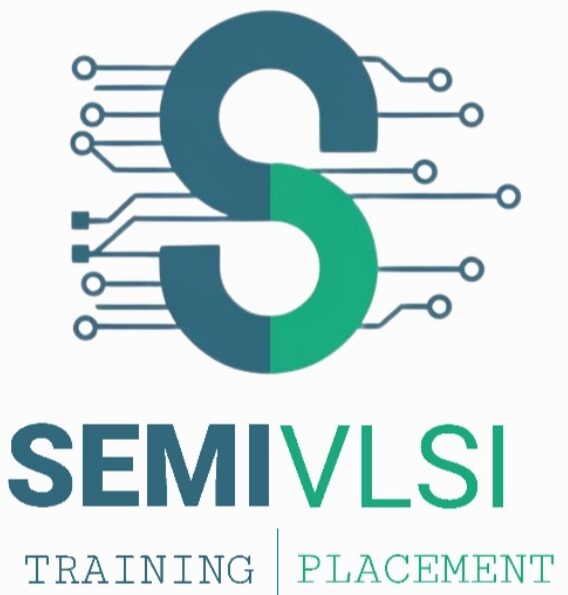Analog Layout Course - AL
Don’t wait—enroll now in SEMIVLSI and take the first step toward a successful future in the semiconductor industry.

Understanding Analog Layout Design
What is Analog Layout Design (AL) Role in VLSI Design Process ??
The Analog Layout role is vital in the VLSI industry, focusing on creating precise physical designs for analog, mixed-signal, and RF circuits. Analog layout engineers ensure high performance, low noise, and reliability by translating circuit schematics into manufacturable layouts while managing parasitics, matching, and symmetry to meet stringent design specifications.
Key Responsibilities of an Analog Layout Engineer
- Component Placement : Arrange transistors, resistors, capacitors, and other components with precision.
- Routing : Connect components while minimizing parasitics and ensuring signal integrity.
- Verification : Perform DRC (Design Rule Check) and LVS (Layout Versus Schematic) to ensure compliance with design rules and circuit integrity.
- Process Optimization : Adapt designs for different technology nodes while meeting performance and area constraints.
Why Choose an Analog Layout Career?
"Analog layout is a highly specialized and rewarding career path, essential for applications like power management, sensors, amplifiers, and RF circuits. With growing demand in IoT, automotive, and communication technologies, analog layout engineers are integral to cutting-edge chip design"
"Join our Analog Layout Training Program to learn industry-standard tools like Cadence Virtuoso, gain hands-on experience, and develop the skills needed for a successful career in the semiconductor industry"
Analog Layout (AL) - Curriculum
1 | Introduction to VLSI
- ASIC Design Flow
- ASIC vs FPGA
- ASIC RTL Design Methodologies
- ASIC Verification Methodologies
2 | Basics of Electronics
- Voltage, current, resistance, and power relationships
- Types of circuits, Ohm’s law, KCL, KVL
- Passive components: resistors, capacitors, and inductors
- Differences between conductors, insulators, and semiconductors
- Device physics, PN junctions, low-ohmic contacts
- Diode working principles and VI characteristics
- BJT (Bipolar Junction Transistor) working principles and VI characteristics
- MOSFET (Metal-Oxide-Semiconductor Field-Effect Transistor) working principles, VI characteristics, and second-order effects
- CMOS technology, its working, and advantages
- Basics of Static Timing Analysis (STA)
3 | Fabrication
- The process from sand to wafer
- FEOL (Front-End of Line) device fabrication
- BEOL (Back-End of Line) forming interconnects
- Back-end assembly and packaging
- Construction of inverter mask-by-mask
- Construction of different devices and their cross-sections
- Deep N-well (DNW)
- Understanding Process Design Kits (PDK) and Design Rule Manual (DRM)
4 | Analog Layout Building
- Differentiating analog and digital layouts
- Process variations
- Layout-dependent effects such as WPE, LOD/STI, OSE, PPE
- Matching concepts and guidelines
- Matching guidelines for MOSFETs, BJTs, resistors, capacitors
- Understanding differential pair and current mirror matching
- Advantages and disadvantages of diffusion sharing
- Noise mitigation techniques
5 | Digital Layout Building
- ASIC (Application-Specific Integrated Circuit) flow
- Building standard cells
- Types of standard cell libraries: combinational, sequential, clock, and others
- Libraries categorized by performance, density, and power
- Different Vt (threshold voltage) libraries and their use cases
- LEF (Library Exchange Format), DEF (Design Exchange Format), and .LIB files
- Stick diagrams
6 | Sign-off Checks
- Design Rule Check (DRC)
- Layout vs. Schematic (LVS) checks
- Latch-up checks
- Antenna checks
- High Voltage DRC
- Design for Manufacturing (DFM)
- Reliability Verification (RV) including Electro-Migration (EMIR) and Electro-Static Discharge (ESD) basics
- Pre-layout and post-layout simulations
7 | FinFET & Multi-Patterning
- Construction and working of FinFETs
- The need for multi-patterning techniques
- Design intricacies at lower nodes
8 | Tools, Flow, Methodology
Tools used:
- Cadence Virtuoso 6.1.8
- Mentor Graphics Calibre Interactive – LVS/DRC v2020
9 | Hands-on Designs
Layout Designs:
- High Speed Driver
- LDO
- BGR
- OpAmp
- Decap Building
- Differential Pair Variations
- Current Mirror Variations
- Level Shifter
- Pass Gates
- Buffers with different Drive Strength
- Building STD Cell Library
- Building Complex Flip-Flop with Stick Diagram
- Decoder Variations
- Digital Mux Blocks
- Hierarchical Digital Blocks
- Hierarchical Analog Blocks
- Hierarchical AMS Designs
13 | Soft Skills & Interview Preparation
- Resume Building and Highlighting Projects
- Mock Interviews
- Behavioural and Situational Interview Preparation.
Course Highlights
SEMIVLSI
Industry Collaborations
At SEMIVLSI, we take pride in our strong partnerships with leading companies in the VLSI and semiconductor domain.These collaborations ensure that our training programs remain aligned with industry standards and provide our students with excellent placement opportunities.

Currently Running & New Batches
Start your exciting journey by enrolling now
Exciting Offer Alert!
Special Discounts on Upcoming VLSI Batches at SEMIVLSI
Kickstart your career in VLSI with SEMIVLSI—now at an unbeatable price!
Limited-Time Offer:
Enroll in our upcoming VLSI training & placement batches and enjoy exclusive discounts on course fees upto 40 %.
Course Name | Start Date | Timings | Training Duration | Register for Training |
Design & Verification (DV) | 03-Feb-2025 | 09:30 AM - 11:00 AM | 5 Months | |
Physical Design (PD) | 03-Mar-2025 | 09:30 AM - 11:00 AM | 5 Months | |
Analog Layout (AL) | 03-Mar-2025 | 09:30 AM - 11:00 AM | 5 Months | |
RTL Design | 03-Mar-2025 | 09:30 AM - 11:00 AM | 5 Months |
Enrollment Form
Registration form for VLSI Training and Placement programme

Join SEMIVLSI Today !
“Kickstart your career in the semiconductor industry with SEMIVLSI. We offer industry-focused VLSI training programs combined with guaranteed 100% placement support to help you secure your dream job”
Your VLSI Career Starts Here !
Don’t wait—enroll now in SEMIVLSI and take the first step toward a successful future in the semiconductor industry.
